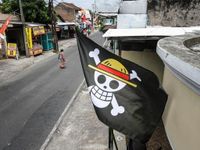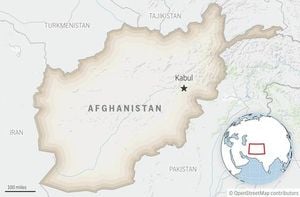As Indonesia marked its 80th Independence Day on August 17, 2025, the nation found itself at a crossroads—caught between jubilation and a wave of creative dissent that has swept across its islands. In a year meant to celebrate freedom from Dutch colonial rule, an unexpected symbol has emerged: a cartoon pirate flag, inspired by the wildly popular Japanese anime One Piece. This flag, featuring a skull and crossbones topped with a straw hat, has become a fixture on homes, vehicles, and even boats, signaling a growing sense of public frustration with the government.
The pirate flag, made famous by the anime’s protagonist Monkey D. Luffy—a character who dreams of becoming the pirate king—has come to represent hope, freedom, and a pushback against perceived authoritarianism. According to Al Jazeera, the flag’s presence beneath the national red-and-white (merah-putih) banner is more than just a quirky homage to pop culture; it’s a sign of mounting dissatisfaction. "Rising prices, difficulties in getting a job and the incompetencies of the government have prompted the people to use satire and sarcasm," explained Radityo Dharmaputra, a lecturer in international relations at Airlangga University.
Indonesia, Southeast Asia’s most populous democracy, has been grappling with significant challenges. Sworn in as president in October 2024, Prabowo Subianto promised rapid economic growth and sweeping social change. Yet, the reality on the ground has been far less rosy. Youth unemployment stands at a staggering 16% among the country’s 44 million people aged 15–24, one of the highest rates in the region. At the same time, foreign investors have been pulling out capital, and the government has been forced to tighten its belt with budget cuts.
These economic woes are mirrored in public sentiment. A survey published by the ISEAS-Yusof Ishak Institute in January 2025 found only 58% of young Indonesians were optimistic about the government’s economic plans—well below the 75% average in neighboring countries like Thailand, Malaysia, and Singapore.
Discontent has spilled into the streets and onto social media. In February, the "Indonesia Gelap" (Dark Indonesia) movement gained traction, with citizens using the #IndonesiaGelap hashtag to vent about budget cuts and proposed legislation that would increase military involvement in government. This digital protest soon morphed into student demonstrations across the nation. President Prabowo, however, dismissed the unrest as the work of "corruptors" intent on sowing chaos. According to Tempo, he declared, "This is fabricated, paid for, by whom? By those who want Indonesia to always be chaotic, Indonesia to always be poor. Yes, those corruptors are the ones financing the demonstrations. Indonesia is dark, Indonesia is dark. Sorry, Indonesia is bright, Indonesia’s future is bright."
For many, the pirate flag has become a powerful way to express their disappointment. Adi, a resident of East Java (using a pseudonym for safety), told Al Jazeera, "To me, it is a symbol of my disappointment and resistance against the government." His frustration is deeply personal. Adi lost family members during the Kanjuruhan Stadium tragedy in Malang city on October 1, 2022, when police fired tear gas at football fans, triggering panic and a deadly crush that killed 135 people. "I am disappointed by the lack of justice for the victims of Kanjuruhan. Until now, we have received none of the restitution we were promised. I am also disappointed by other problems in Indonesia, including rising prices," he said.
The government has not taken the flag phenomenon lightly. Budi Gunawan, the coordinating minister for political and security affairs, warned that authorities would take "firm action" if the pirate flag was flown on Independence Day, threatening criminal consequences for those seen as disrespecting the national flag. Deputy House Speaker Sufmi Dasco Ahmad went further, framing the movement as a deliberate attempt to sow division: "We have detected and received input from security agencies that there is indeed an attempt to divide unity. My appeal to all the nation’s children is to unite and fight against such things."
Yet, for many observers, the government’s heavy-handed response has only fueled the movement. Yohanes Sulaiman, a lecturer at Jenderal Achmad Yani University, described the crackdown as overblown. "Saying that the flag has the potential of breaking apart the nation is too much. It is hyperbolic and nobody takes it seriously," he told Al Jazeera. Sulaiman noted that truckers first used the flag to protest new regulations, and had the government ignored it, "the flag would have ended up on the back of trucks and nobody would have taken it seriously. But, they had to make it about a national threat, a threat to national unity and disrespect of the national flag."
The protest’s reach is notable for its diversity. Unlike previous waves of dissent, often led by students, this movement has drawn support from a wide range of groups across urban and rural areas—places not usually associated with political activism. Ian Wilson, a politics lecturer at Murdoch University, remarked, "We are seeing this phenomenon in places like villages and by regular people in semi-rural areas, which are not conventional sites of dissent in Indonesia." He added, "It touches a nerve due to the diffused representation."
Authorities have responded with raids and questioning. In East Java, local media reported that police seized pirate flags and questioned residents in the Riau Islands. However, no criminal charges have been filed, as flying the flag is not technically illegal. Amnesty International Indonesia condemned the raids as "a flagrant violation of the right to freedom of expression." In a statement, executive director Usman Hamid said, "Raising an anime flag is not ‘treason’ or ‘propaganda to disunite the country’, as suggested by government officials. Authorities, including lawmakers, must stop harassing people by threatening them with jail terms for ‘disrespecting the national flag’ and ‘treason’ if they raise One Piece flags."
President Prabowo, perhaps mindful of the backlash, described the flag as "an expression of creativity." Still, the episode has revealed the government’s sensitivity to dissent, especially after the earlier Dark Indonesia protests. As Wilson put it, "No one wants that at the start [of a presidency], as they are trying to generate optimism. But now, further down the track, people have some serious issues with government performance."
Amid the political drama, Indonesia’s financial markets have shown surprising resilience. According to Bank Indonesia, foreign investors poured a net IDR 15.31 trillion into domestic financial instruments from August 11 to 14, 2025, just ahead of Independence Day and President Prabowo’s State of the Nation Address. The largest inflows were in government bonds (IDR 7.88 trillion), followed by the stock market (IDR 5.37 trillion) and Bank Indonesia Rupiah Securities (IDR 2.05 trillion). Despite earlier outflows—IDR 57.48 trillion net sold in stocks and IDR 94.52 trillion in SRBI for the year—investors had made a net buy of IDR 71.83 trillion in government bonds by mid-August. Indonesia’s five-year Credit Default Swap premium also fell to 67.72 basis points, signaling improved investor confidence.
As the nation reflects on 80 years of independence, the pirate flag protests and financial developments reveal a country wrestling with its identity and future—determined to voice its frustrations, but also eager to chart a hopeful course forward.




